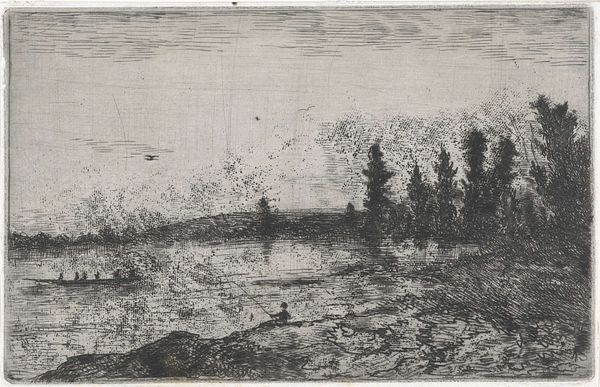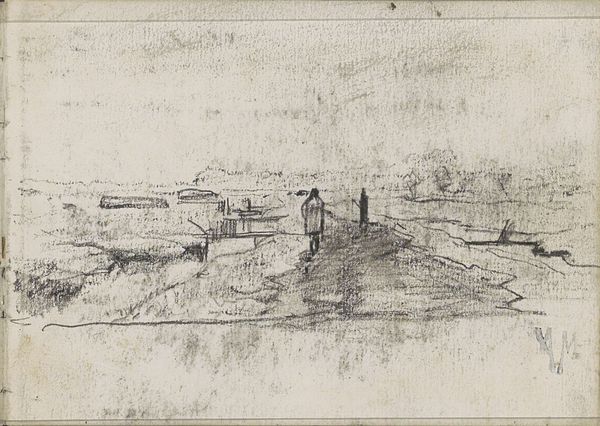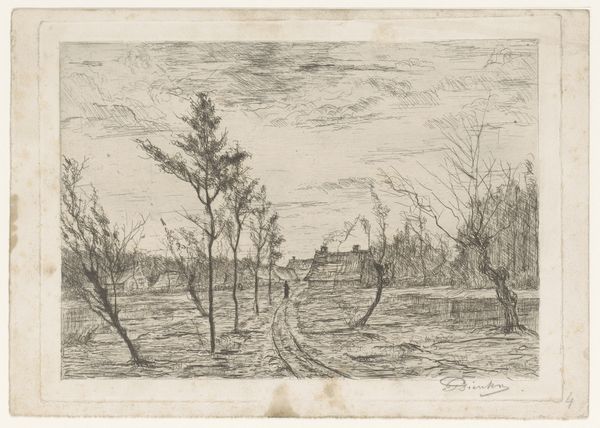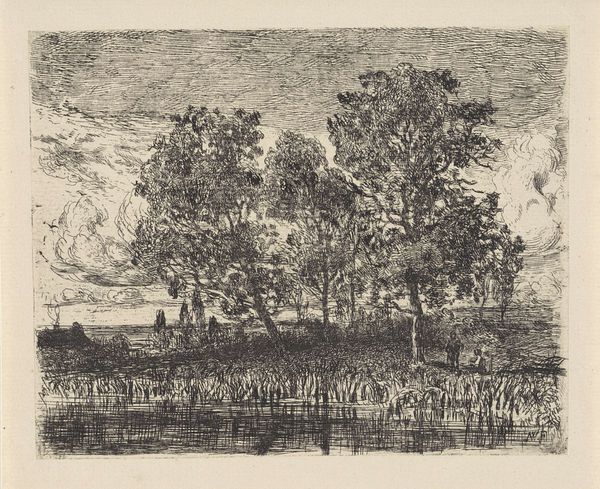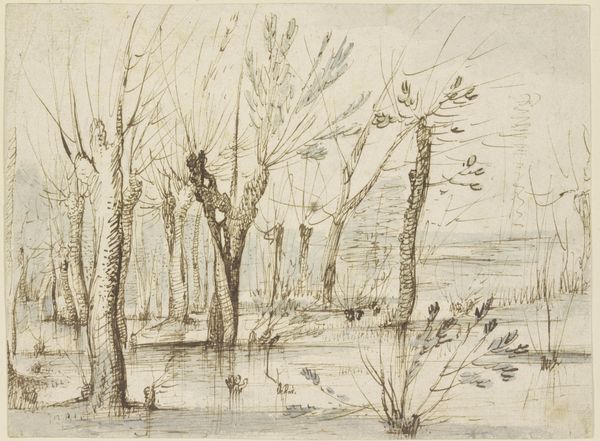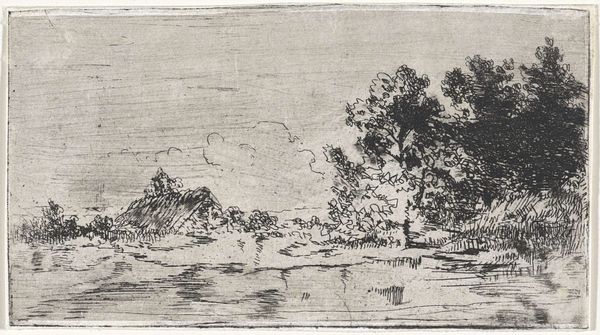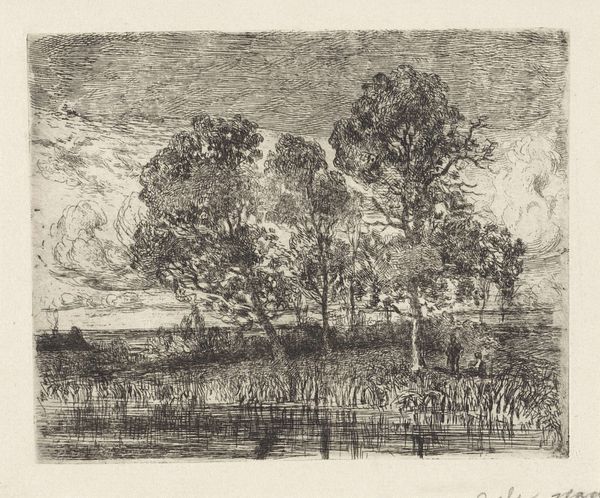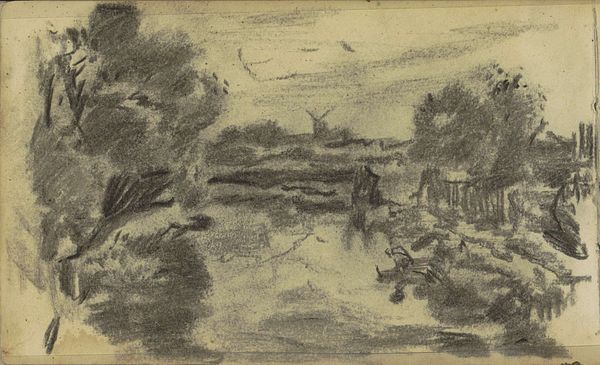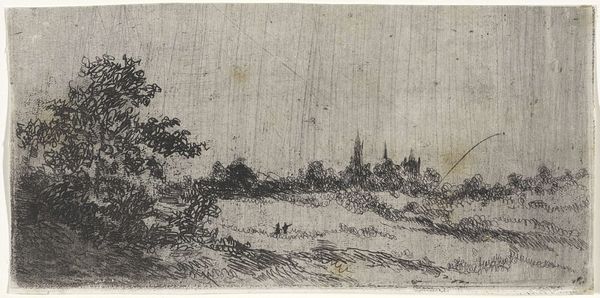
drawing, paper, ink
#
drawing
#
pencil sketch
#
landscape
#
paper
#
ink
#
watercolor
#
realism
Dimensions: height 131 mm, width 206 mm
Copyright: Rijks Museum: Open Domain
Curator: Looking at this drawing, I immediately feel a sense of calm, perhaps a bit melancholy, due to the muted tones. The landscape is beautifully rendered, but the atmosphere is somewhat subdued. Editor: We are looking at a work by Arnoud Schaepkens, a landscape entitled "Landschap met roeiboot en hengelaar," likely created sometime between 1831 and 1904. It’s a delicate work primarily rendered in ink and pencil on paper, accented with watercolor washes. Curator: The image of the fisherman alone on the shore really stands out. Fishing, symbolically, can be such a rich image, right? Waiting, expectation, the provision of sustenance...or simply solitude. It’s rather romantic, isn't it? Editor: I think what I find compelling here is the intersection of human activity and the natural world. Schaepkens has captured a fleeting moment of leisure and how this pursuit of a personal satisfaction blends with the quiet dignity of nature. Consider how this imagery may have been received at a time of burgeoning industrialization, and what the values implicit are here. Curator: It also feels rather timeless, that solitary figure existing in the landscape. Notice the careful application of light; the reflected light on the water provides some striking definition within the grayscale tones of the composition, guiding the eye. Editor: Absolutely. And note the boat on the left horizon – a little gathering of people on the water. Contrast that with the isolated fisherman – and then the airplane hovering overhead. They act as subtle social markers—suggesting a stratified public and private interaction. It speaks to both a personal journey and collective identity during this period, capturing nuances about public and private spaces. Curator: Fascinating how Schaepkens uses those visual cues. The symbols and details aren't overtly expressive, but their juxtaposition prompts thoughtful reflection on humanity's place within a rapidly changing environment. Editor: Indeed, art like this becomes a cultural touchstone, reminding us to reflect on nature's enduring appeal even as society continues its course.
Comments
No comments
Be the first to comment and join the conversation on the ultimate creative platform.
